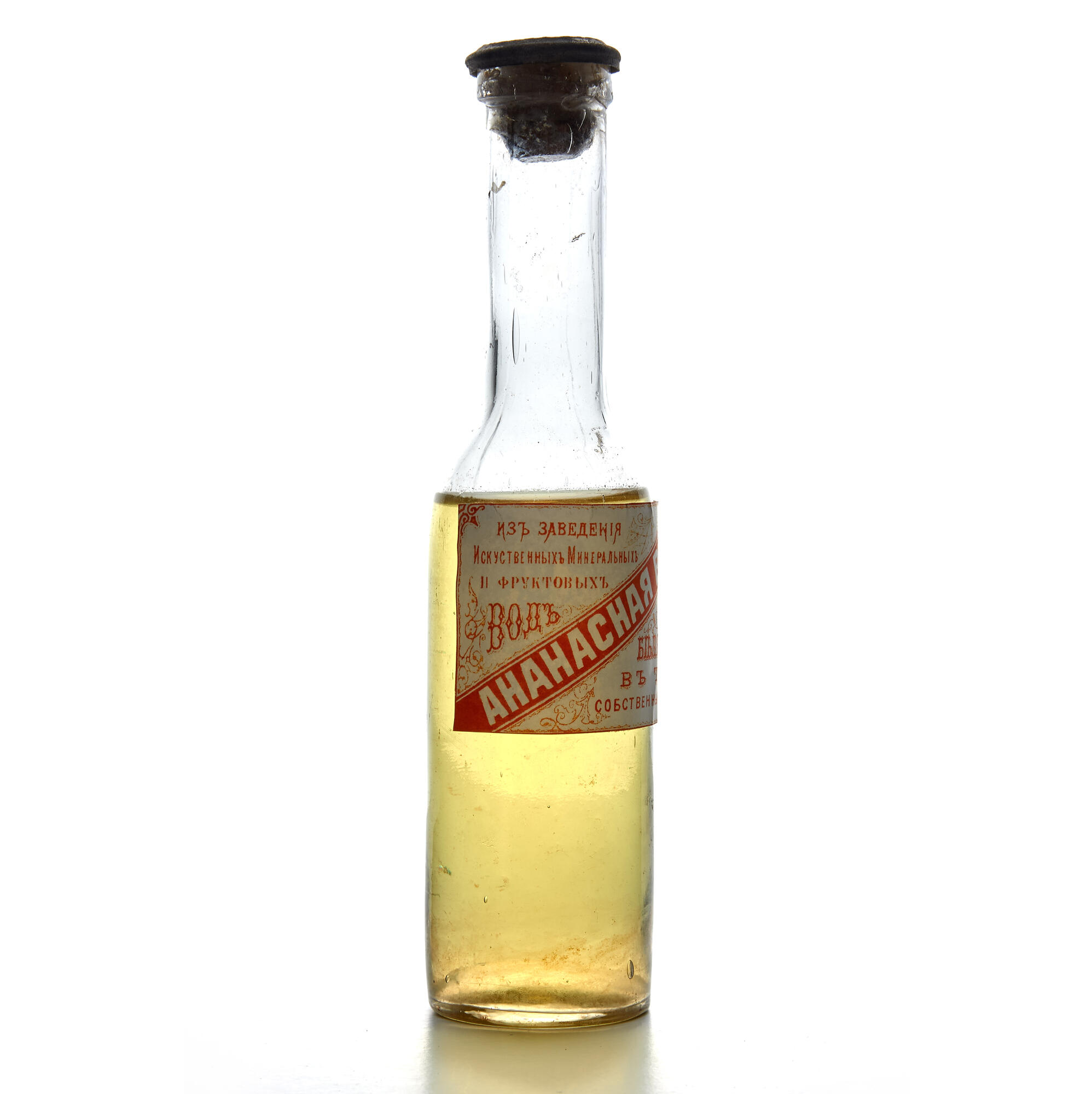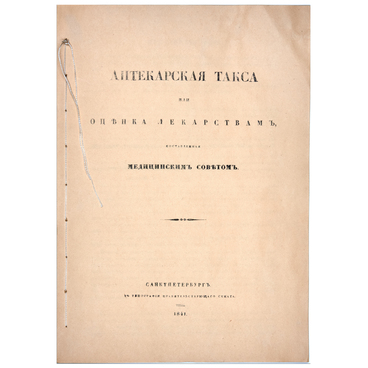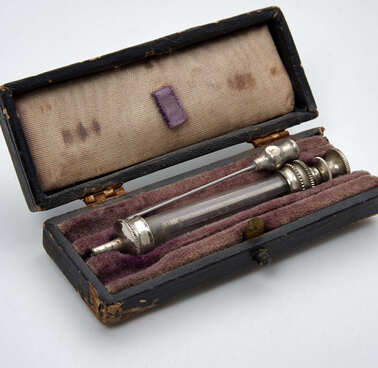At the turn of the 19th–20th centuries, pharmacies sold both pharmaceuticals and products recommended for people with poor health: dry broths, instant cereals, herbal teas, coffee, cocoa, spices, candied fruits, red wines, mineral waters, and fruit lemonades. Many pharmacies manufactured products under the original label. There are cases when small pharmacy productions have grown into world-famous brands. For example, the Nestle group corporation began with the production of formulas of the Swiss pharmacist Henri Nestle, and the American pharmacist John Pemberton, who came up with tonic water from coca leaves, stood at the origins of Coca-Cola.
The owner of the ‘Old Tula Pharmacy’ Ferdinand Belyavsky also organized his own production of mineral water and fruit drinks at the end of the 19th century. The museum collections contain labels from drinks with blackcurrant, pear, and pineapple flavors.
At the beginning of the 20th century, pineapples were considered expensive, exotic fruit. Therefore, people often bought water with such an unusual extract. Fruit drink was sold carbonated. Saturated with gases, it was considered good for the digestive system.
In the 18th century, carbonated water from natural sources began to be bottled and transported around the world. At the same time, its cost was very high, and its shelf life was short. As a rule, even during transportation, the gas escaped from the water. Therefore, in the same century, experiments on artificial carbonation of water began.
The creator of artificially carbonated water is considered to be an Englishman Joseph Priestley, who in 1767 noticed gasification during fermentation. Then, in 1770, Tobern Bergman from Sweden invented an apparatus that saturated water with gas under pressure using a pump. The device was called a saturator, and the method itself was called saturation (from the Latin ‘saturo’ — to saturate). However, both of these scientists were unable to put their discoveries into production. The German inventor Jakob Schwepp succeeded in this. It was him who in 1783 was the first to launch a carbonated water plant, having improved the saturator. At the beginning of the 19th century, the demand for Schwepp’s water increased, and the industrialist decided to reduce the cost and speed up the production while discovering a new way of carbonating water. He began to use baking soda — hence the name “soda”.
In the Russian Empire, bottled carbonated water was considered " gentlemen’s water’, it was also called Zelter water — after the name of the mineral spring. In pharmacies, one could buy a variety of types of mineral water and fruit drinks. Unfortunately, the bottles of fruit drinks produced by Ferdinand Belyavsky have not been preserved, but several original labels were found in the attic of his house.



